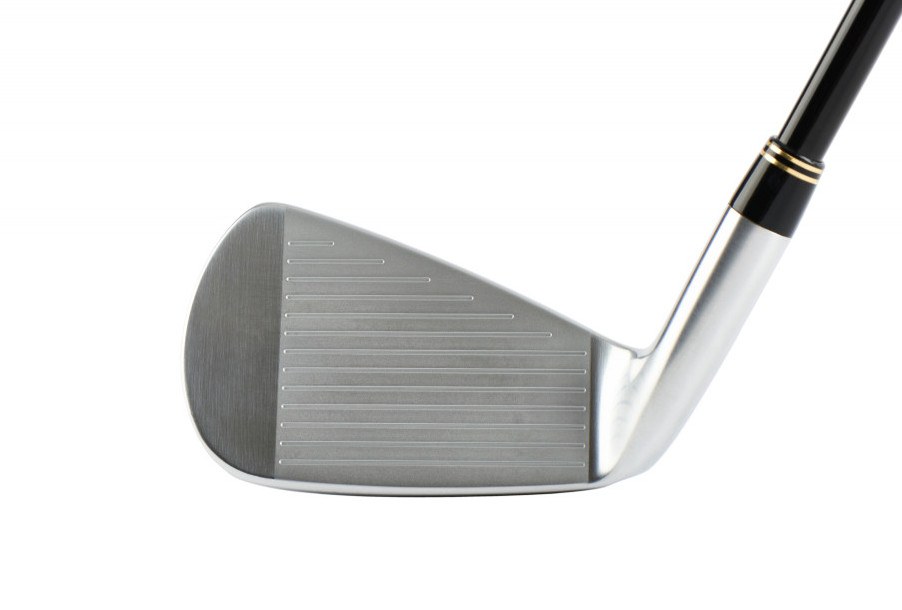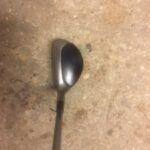If you watch PGA golfers, especially in slow motion, there is something deeply satisfying about seeing that ball first contact followed by a beaver pelt divot being cut away after the ball. It just seems like the mark of a good golfer. Ball first, divot after. As a golfer who doesn’t take huge divots, I sometimes think that I would be better if I too sliced away a mini Grand canyon after the ball, but is this really true? Do divots matter in terms of playing good golf?
I am not saying I don’t take divots. In fact, I generally do, but they are far from huge. There are a number of reasons for this which we will talk about. Ultimately though, my handicap has been well into single figures playing like this which seems to say that it isn’t that big of a deal.
In fact, this is a true ‘tail wagging the dog’ moment. Do good golfers play well because the take a divot or do they take a divot because they play well? It is a bit like hitting a draw rather than a fade. Although professional golfers can shape the ball both ways, I would guess more hit a stock draw than a fade. However, hitting a draw doesn’t make you a better golfer (just ask Martin Kaymer.)
I have a friend who worked very hard to turn his fade into a draw and in the process got considerably worse at golf. I did the same and got slightly better, although not in all areas of the game.
Why Do Golfers Make Divots?
so how does this relate to our divots? I would guarantee that the best golfers in the world couldn’t care less about their divots. What they want is to get the ball going where they need it to go. The simple fact is that they have excellent swing mechanics and the result of these excellent swing mechanics is a divot. In practice, this means that the average pro will be hitting his irons with a descending blow (several degrees down) with his irons and hitting the ball first. This leads to the famous crisp contact which leads to perfect shot control. A secondary effect is that the club head continues into the dirt and makes a divot.
As a general rule, this means that if you are making a divot after the ball, there is a good chance that your ball striking is pretty good. So it can make sense up to a point to look at your divots. I think it is important not to take this too far though. As an example, one drill I used to like is to hit shots off grass at the range along a line. This can be an actual line on the green marked out with white paint or whatever, or simple a couple of tee pegs marking the end points of the line. After each shot, see where the divot is. If it is consistently after the ball, this is (probably) a good thing, showing ball-first contact.
The downside here is that making this divot move forward of the line can have some negative effects as well as positive. For me, it did help me tone down my flip at the ball but it also encouraged me to over-exaggerate the position of my hands. I moved them so far in front of the ball that I was almost leading into the ball with the hosel and the consequence was a crisis of everyone’s favourite shot, the shank!
Now this is clearly me, not the divot or the drill itself, but the lesson is that I didn’t’t need to push this whole thing quite that far.
You might be wondering why my divots are fairly small given that I claim to be a decent iron player. In many ways, this is deliberate. I have had a few elbow and shoulder problems. The last thing I want is to be smashing the club into the ground at high speed. This is also why I don’t hit off mats unless I can help it and I do deliberately try to pick the ball more cleanly off the turf rather than digging it out of the dirt as the famous saying goes.
Does Divot Direction Matter?
The other big bone of contention with the divot is the direction the divot points. I have seen coaches dissect in detail what is going on with a swing by looking at the divots. Personally, I am not a fan of this at all for a couple of reasons.
Firstly, for me it is basically pseudo-science. I don’t believe that a divot direction can lead to swing diagnosis. The fact that you divot points left (as a right-handed golfer) doesn’t always mean that you are swinging out-to-in. And even if it does, this doesn’ make it bad. People play great golf swinging out to in. People have won major championships swinging from out to in.
Regardless, this divot form could have multiple causes. If you start trying to push your swing more from the inside because you think your divot is telling you something, you could actually be going in completely the wrong direction.
I don’t want this article to come off as “anti-divot”. I would say that the weight of history and success in golf would be heavily stacked against me given that almost every successful golfer ever has taken divots. Simply, it isn’t an end in itself. If, like me, you have more of a sweeping swing, you are probably making a big mistake by worrying too much about the divot. Get back to results. Is the ball going where you want it to go with the ball flight you are looking for and can control? If the answer is yes, does it really matter what is happening to the ground? I am not convinced.




